Accessible Travel Guide to Mt. Hood & the Columbia River Gorge
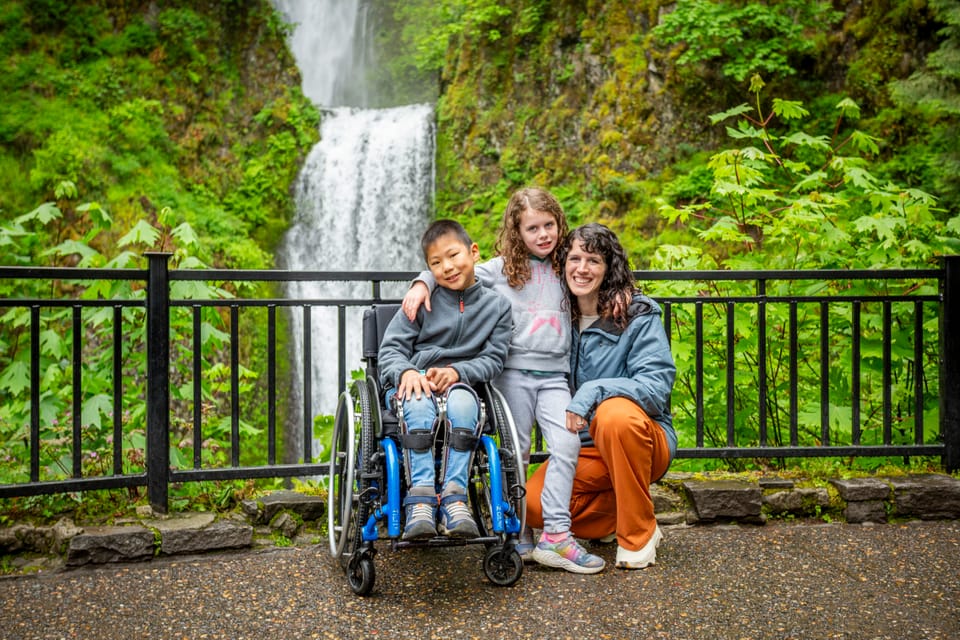
The Columbia River Gorge is one of Oregon’s most dramatic landscapes. Waterfalls spill over cliffs, the Columbia River stretches wide through the valley, and Mt. Hood rises above it all. The towns here — from Cascade Locks to Hood River to The Dalles — give travelers plenty of places to eat, rest, and enjoy the view.
Traveling with a disability doesn’t mean missing out. Popular stops like Multnomah Falls have paved trails and viewing platforms, while Wildwood Recreation Site offers boardwalks and accessible stream overlooks. Hotels in Hood River and beyond have verified accessibility, so you know what to expect before you arrive.
What's Ahead?
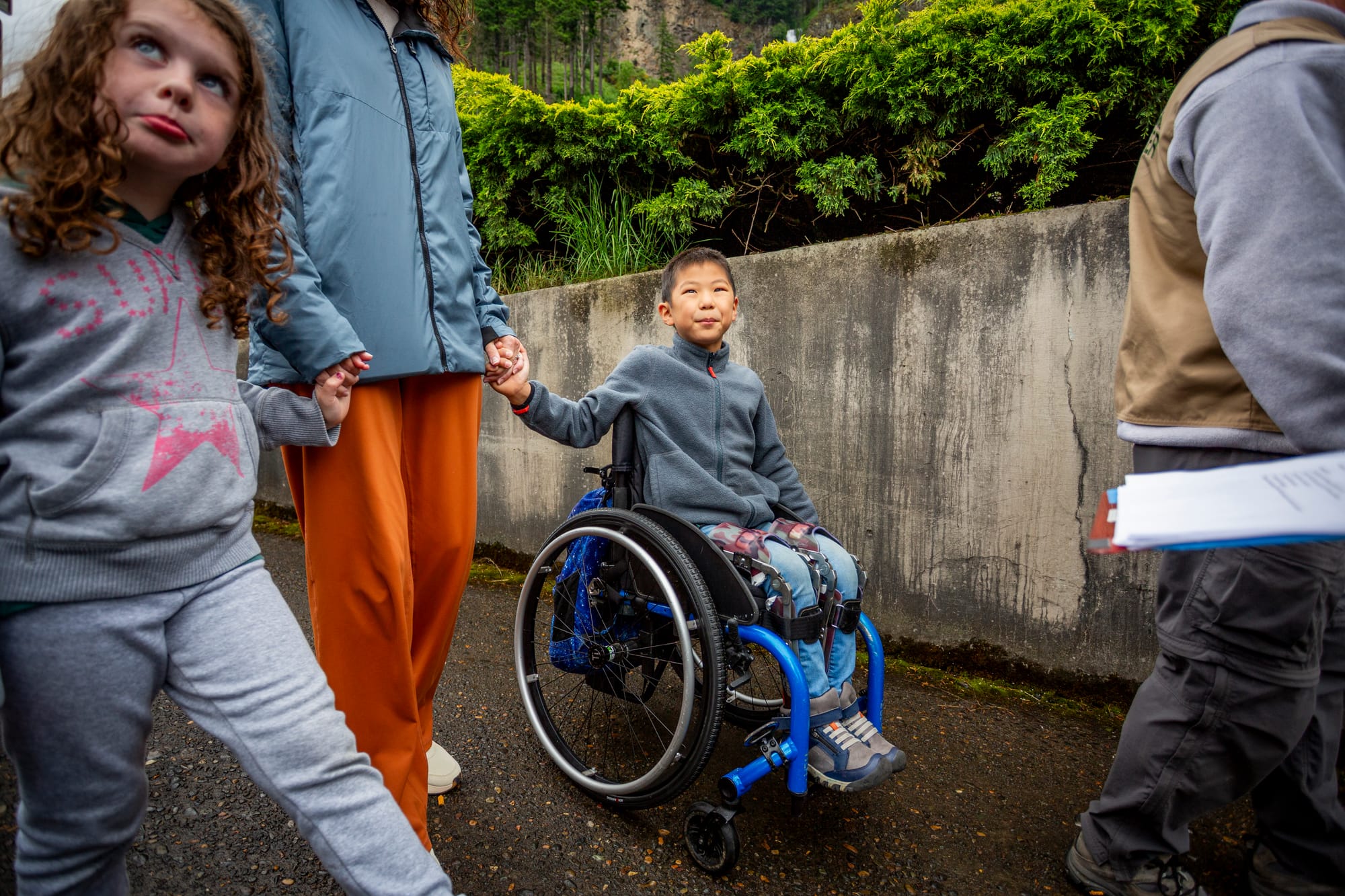
Where to Stay in the Gorge & Mt. Hood
Picking the right base just depends on what you prefer. Each town has its own personality, so let's go over some options.
Hood River: River energy & mountain views
Hood River is the Gorge’s most popular base, and for good reason. The town sits right on the Columbia River, with wide views of the river framed by green hills and snowy Mount Hood in the distance. It has the most walkable downtown in the region, with streets that are lively but not overwhelming. You’ll always see people outside strolling the waterfront, launching kites, or grabbing a table at a brewery patio. If you like a mix of small-town energy and outdoor beauty, this is where you’ll feel at home.
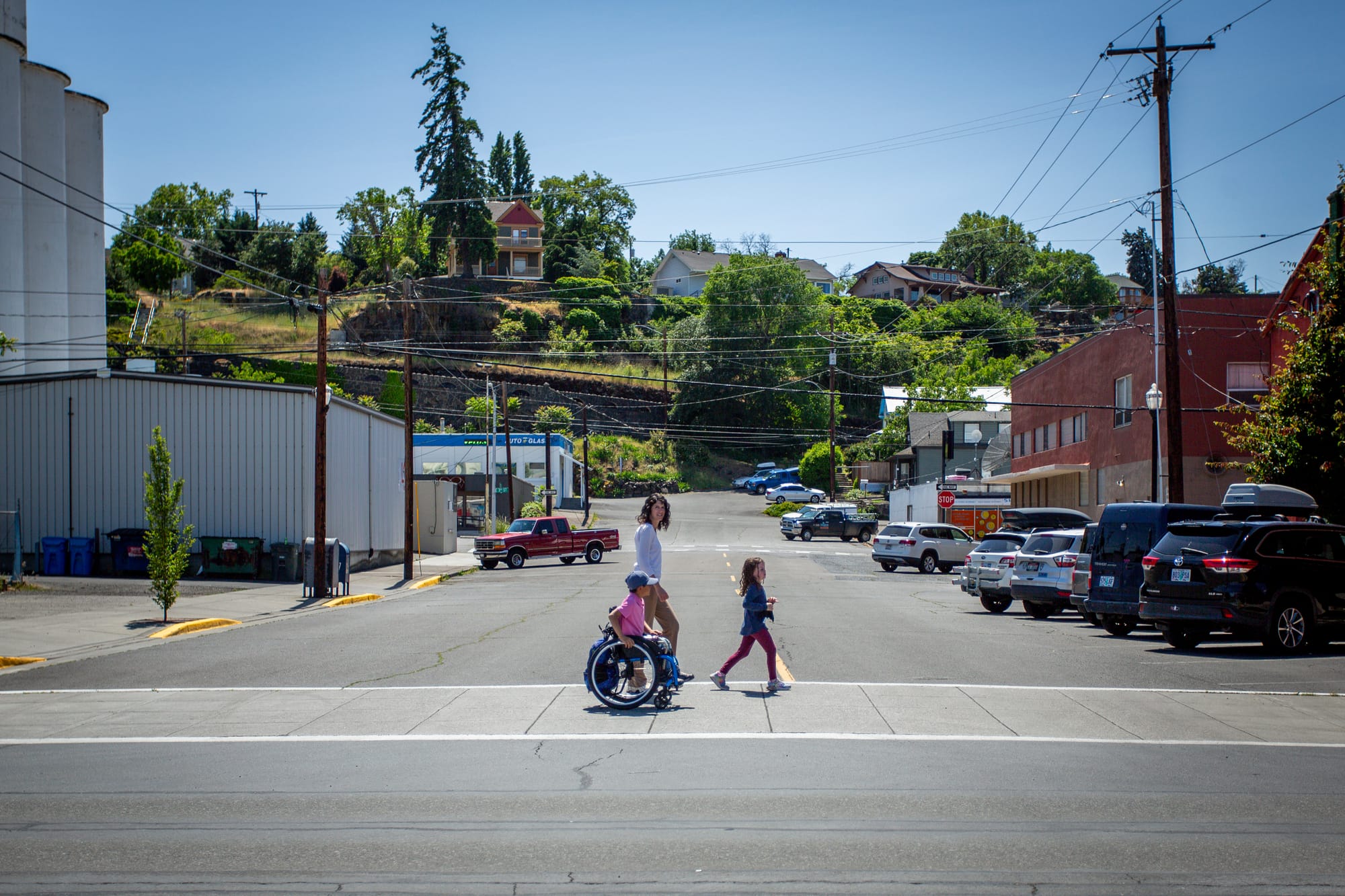
Sandy & Welches: Gateway communities
As you head up Highway 26 toward Mount Hood, Sandy and Welches are the towns that ease you into the mountains. Sandy has the feel of a small service hub — you’ll find markets, diners, and a growing number of local businesses. Welches, tucked further in the forest, feels quieter and more like a resort base, with golf, hiking trails, and easy access to Trillium Lake or Timberline Lodge. Staying here means you’re surrounded by tall trees, with cooler air at night and a slower pace overall.
The Dalles: Dry side of the Gorge
The Dalles is where the Gorge feels sunnier and less crowded. It’s also one of Oregon’s most historic towns, with ties to the Oregon Trail and river navigation. Streets are wide, the pace is slower, and you’re likely to get blue skies even when it’s cloudy farther west. If you’re interested in history or just want a quieter stay with reliably warm weather, this is the right fit.
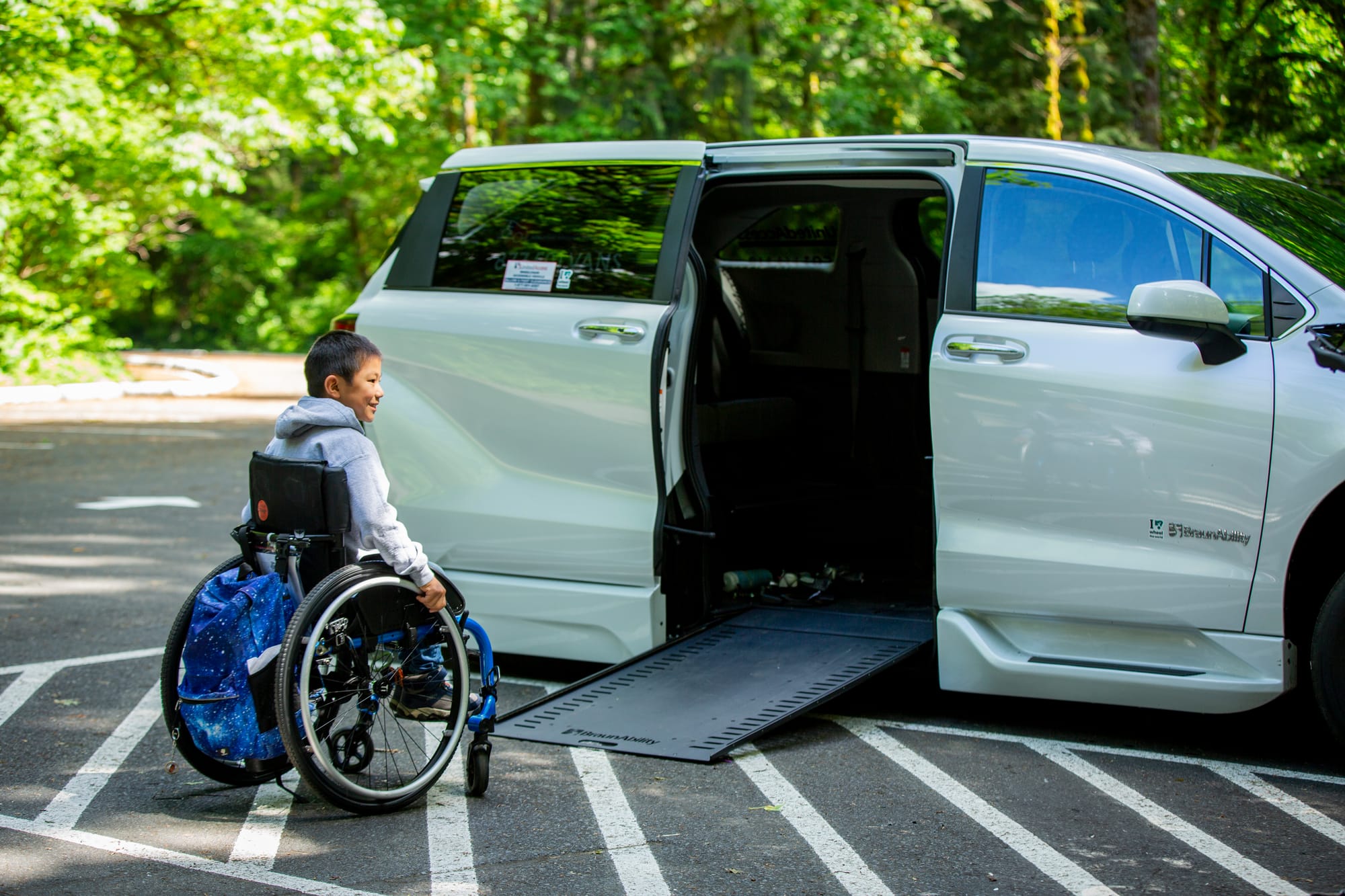
Oregon City: Edges of the metro
Oregon City isn’t technically in the Gorge, but it’s often a practical start or finish point for a trip. South of Portland, it has its own riverfront, historic main street, and the famous End of the Oregon Trail Interpretive Center. Staying here works best if you’re flying in and want to ease into your trip before heading east, or if you’d rather end your travels close to the airport without giving up the small-town feel.
Our take
Hood River is the best all-around base if you want energy and variety. Sandy or Welches are better for a mountain-focused trip. The Dalles works well for sun and space. Oregon City is most useful as a bookend if Portland is part of your travel.
Getting Around the Gorge & Mt. Hood
This part of Oregon covers a lot of ground. The Columbia River Gorge stretches east to west, while Mount Hood rises up to the south — and the drives between them are part of the experience.
If you’re flying in, Portland International Airport (PDX) is your main entry point. From there, it’s just under an hour to Troutdale (the gateway to the Gorge), about 90 minutes to Hood River, and roughly two hours to Mount Hood’s higher elevations.
United Access in Portland offers adapted vans with ramps and hand controls, making it one of the best resources in the area for travelers with mobility needs. We used them on this trip. Their service is outstanding and the vehicle met our needs!
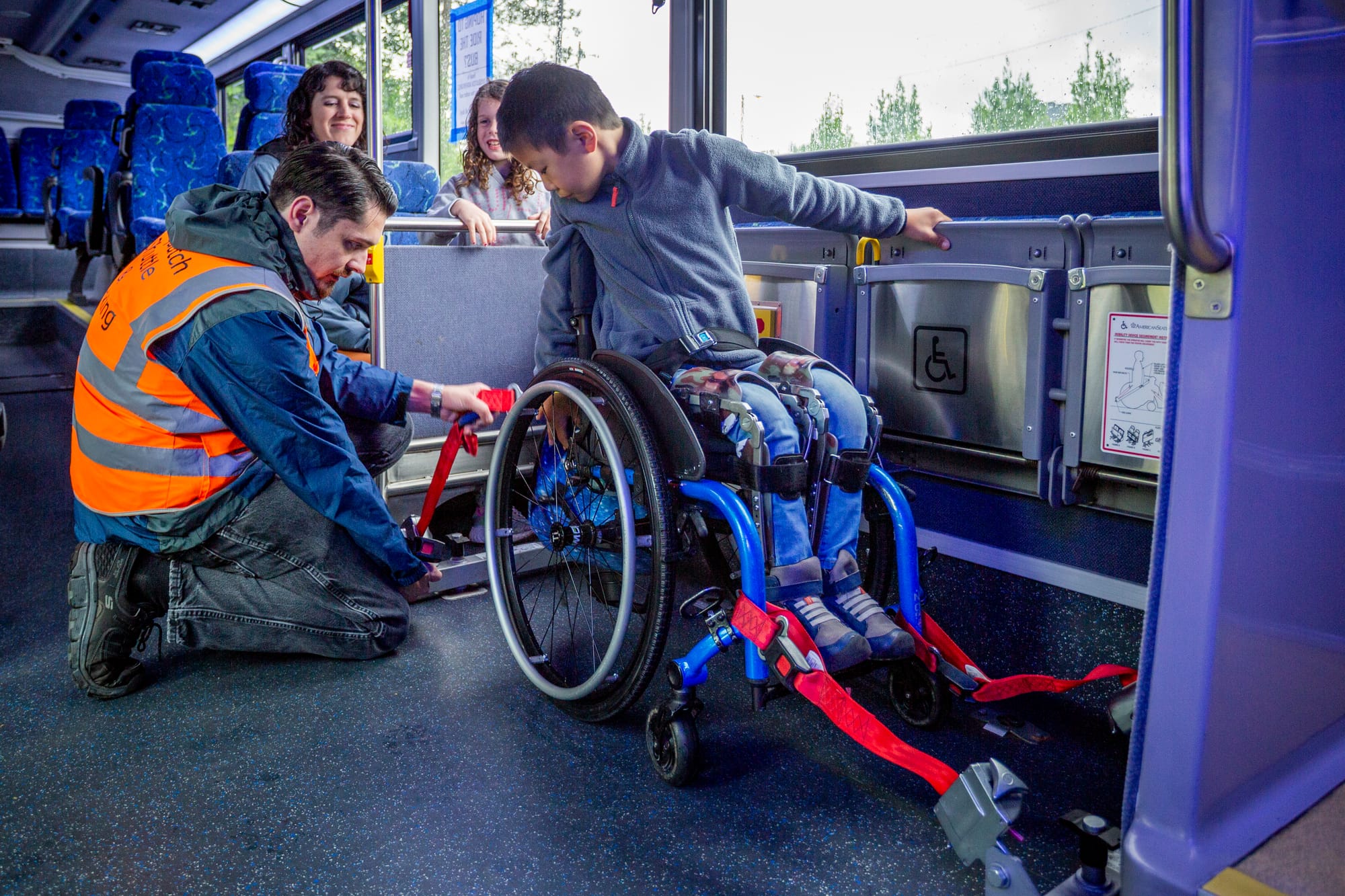
Public and seasonal transit can help in certain spots:
- Sasquatch Shuttle (seasonal) runs visitors to Multnomah Falls and other trailheads along the Historic Columbia River Highway. Buses are wheelchair accessible, and it’s a good option when parking fills early.
- Mt. Hood Express (year-round) connects Sandy to Government Camp and Timberline Lodge. It’s accessible, reliable, and especially useful if you don’t want to drive the mountain roads yourself.
- Sandy Area Metro (SAM) links Sandy with Estacada and a few other small towns. It’s slower but does provide wheelchair-accessible service.
Even with these options, most travelers will find their own car easiest, especially if you’re traveling with mobility equipment and family. Consider the shuttles and buses as helpful add-ons for busy trailheads or mountain access, but not replacements for having your own wheels.
An Accessible 3-day Itinerary for Mt. Hood & the Columbia River Gorge
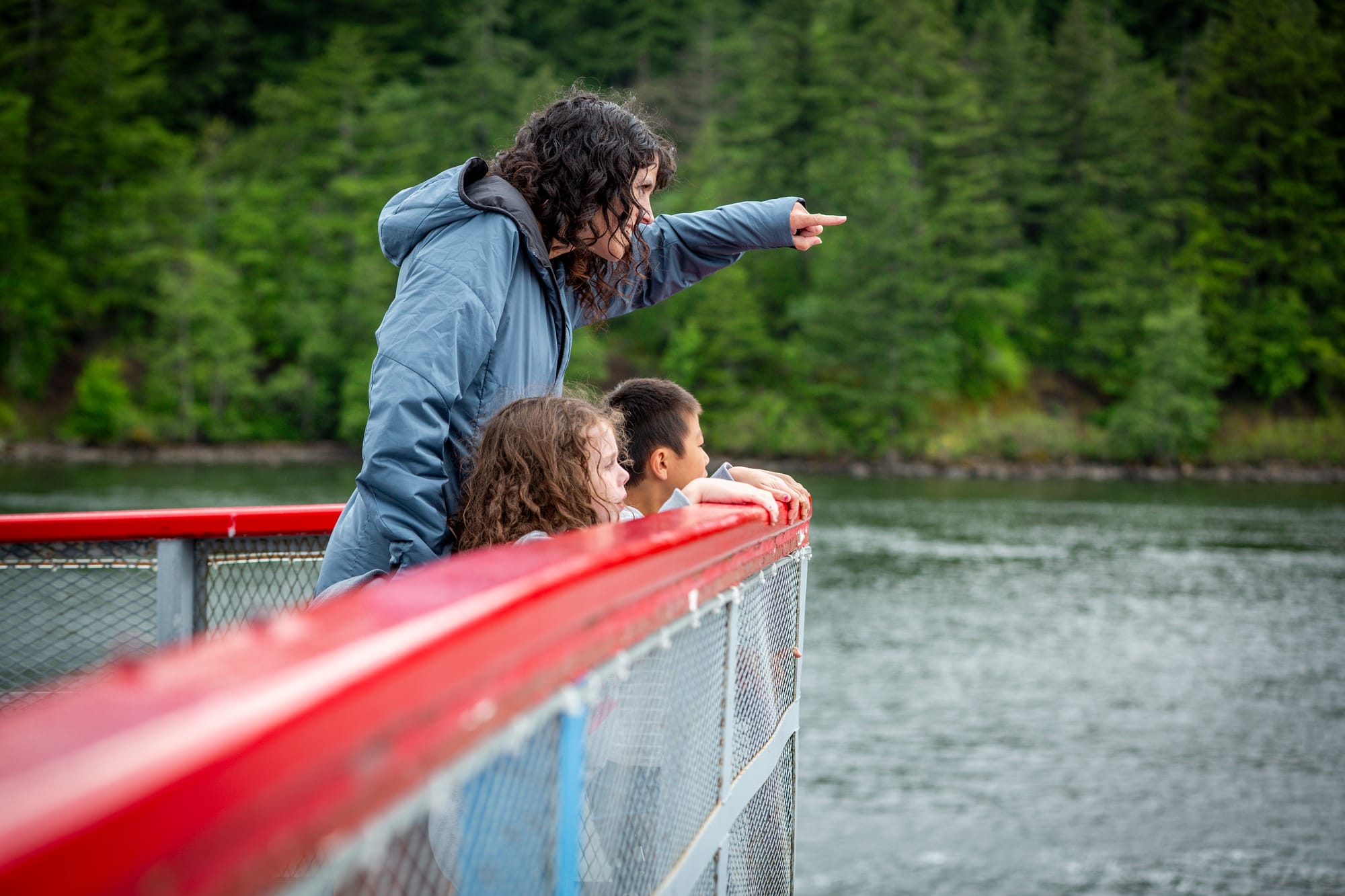
Day 1: Waterfalls & River Views
Kick things off with one of Oregon’s most iconic sights: Multnomah Falls. The main plaza at the base is fully accessible with paved paths, ramps, and step-free viewpoints, so everyone can enjoy the 620-foot cascade. If you want to go a little higher, the paved trail up to Benson Bridge gets you closer to the water. Just know that, due to the incline, it isn’t considered ADA-compliant. Power wheelchair users or manual chair users with a strong push can often make it, but it’s steeper than what’s officially rated accessible.
After your morning at the falls, head into Cascade Locks for lunch. Brigham Fish Market is casual, quick, and known for salmon fresh from the Columbia River. Another great option is Eastwind Drive-In, famous for its towering soft-serve cones that are a hit with kids (and honestly, adults too).
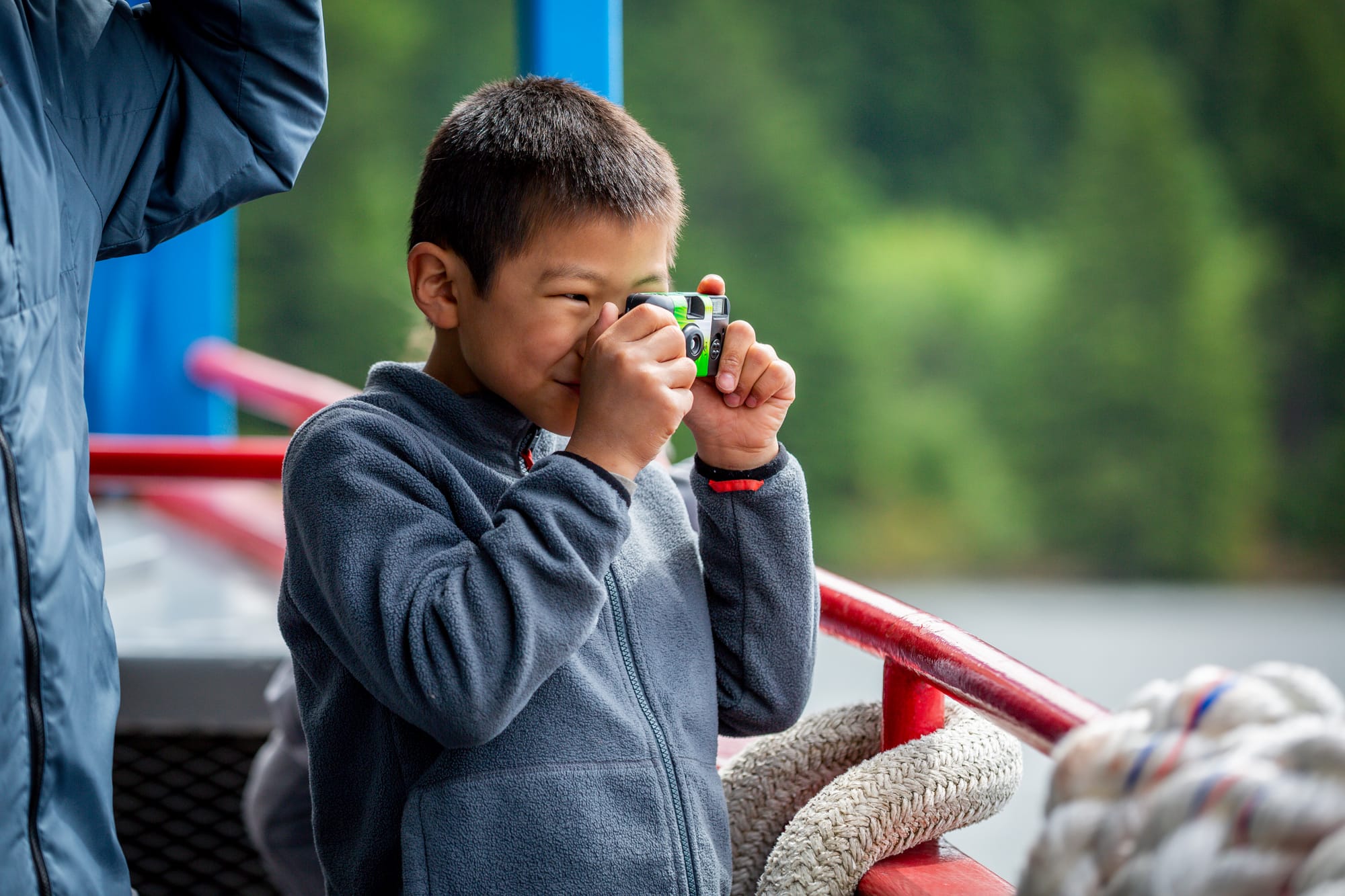
In the afternoon, slow down with a ride on the Sternwheeler Columbia Gorge. This classic riverboat cruise drifts along the Columbia, giving you views of cliffs, bridges, and wildlife from the comfort of an accessible deck. The boat has ramps and indoor/outdoor seating, making it doable for most travelers.
By evening, make your way to Hood River. The town sits right on the water, and the Waterfront Park is a good place for a quick stroll or roll before dinner. End the night with wood-fired pizza at Solstice Café & Bar, a local favorite that balances great food with a relaxed, family-friendly vibe.
Stay overnight in Hood River. The Best Western Plus Hood River Inn and Hampton Inn & Suites Hood River both have verified accessibility details and put you close to the action for the next day.
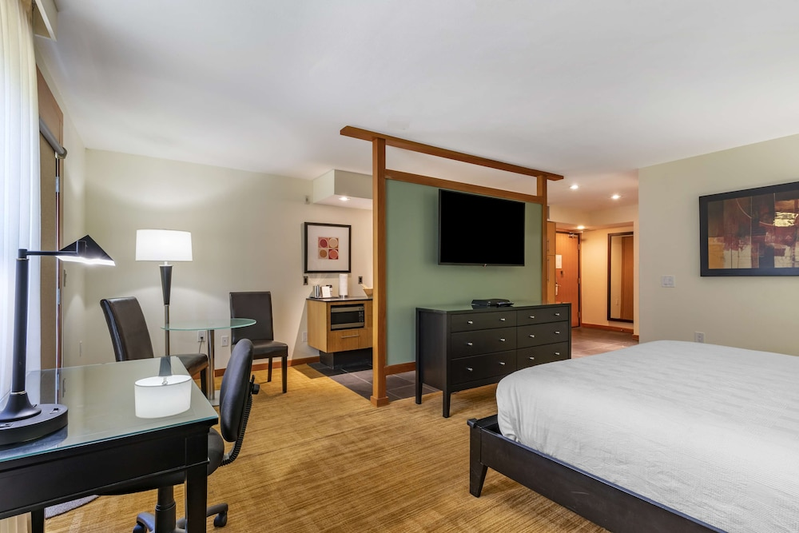
Day 2: Scenic Drives & Family-Friendly Trails
Start the morning in Hood River with coffee and breakfast before hitting the trail. Pine Street Bakery is a local favorite with fresh pastries, hearty breakfast sandwiches, and good coffee to fuel the day. Another great option is Broder Øst, a Scandinavian-inspired café inside the Hood River Hotel, known for dishes like Swedish pancakes and baked eggs.
From there, drive about 10 minutes to the Historic Columbia River Highway State Trail – Twin Tunnels segment at the Mark O. Hatfield West Trailhead. This former highway has been turned into a paved multi-use path, closed to cars, and perfect for wheelchair users, strollers, and cyclists. The section to the Twin Tunnels is about 3 miles one-way, but you can go as far as you like. Scenic viewpoints along the way open up to the Gorge, and the two tunnels themselves are wide and accessible, with smooth pavement throughout.
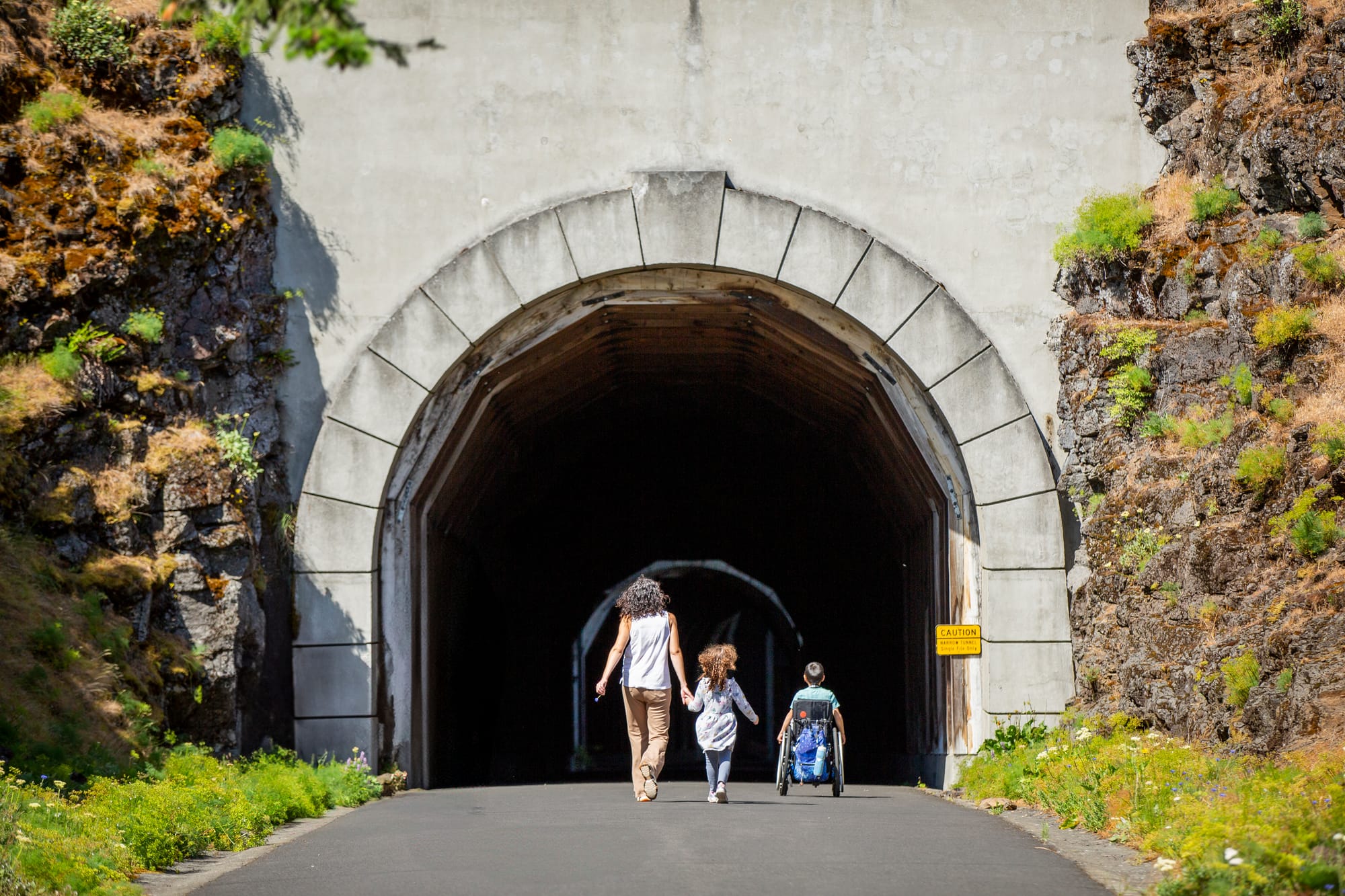
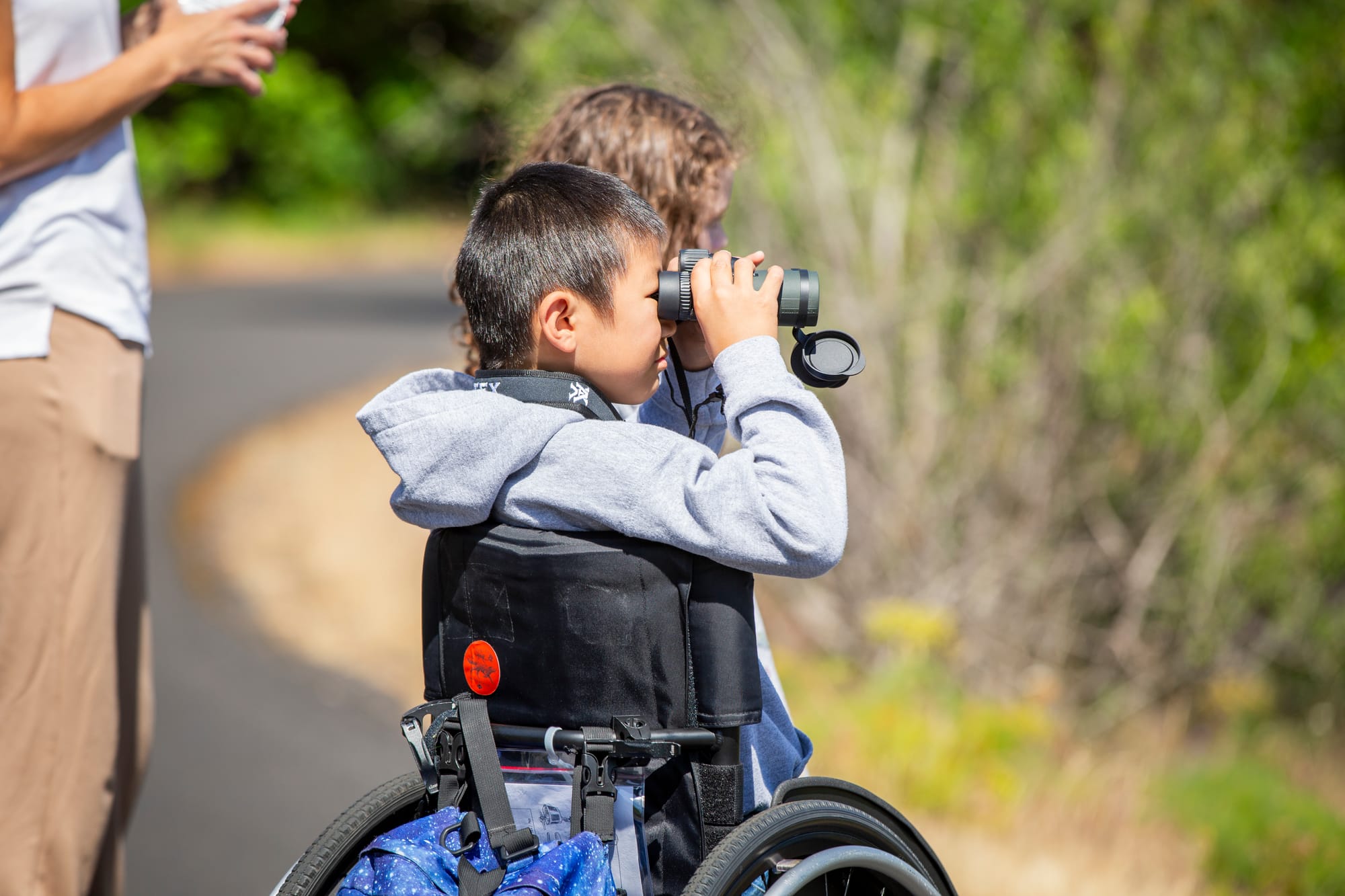
After a couple of hours on the trail, drive south toward Mount Hood. Route 35, part of what’s known as the Hood River Fruit Loop, is gorgeous — orchards, vineyards, and constant views of the mountain as you climb. If you want a snack or something sweet, Mt. Hood Creamery / Baseline Biscuits in Parkdale makes a good lunch stop.
If the weather’s clear, swing by Panorama Point Park for a classic Hood River Valley overlook. Parking is close to the viewpoint terrace, the surface is paved, and the grade is mild; it’s a straightforward roll from the car to the railing. You’ll get Mt. Hood front and center with orchards below, then you can be back on the road in ten minutes.
In the afternoon, head to Wildwood Recreation Site near Welches. This is one of the most accessible outdoor areas in the Mount Hood National Forest. The Cascade Streamwatch Trail is a paved loop with boardwalks that take you through old-growth forest and right to a unique underwater viewing window where you can watch fish swim by. There are also accessible restrooms and picnic areas, so it’s an easy place to spend a few hours.
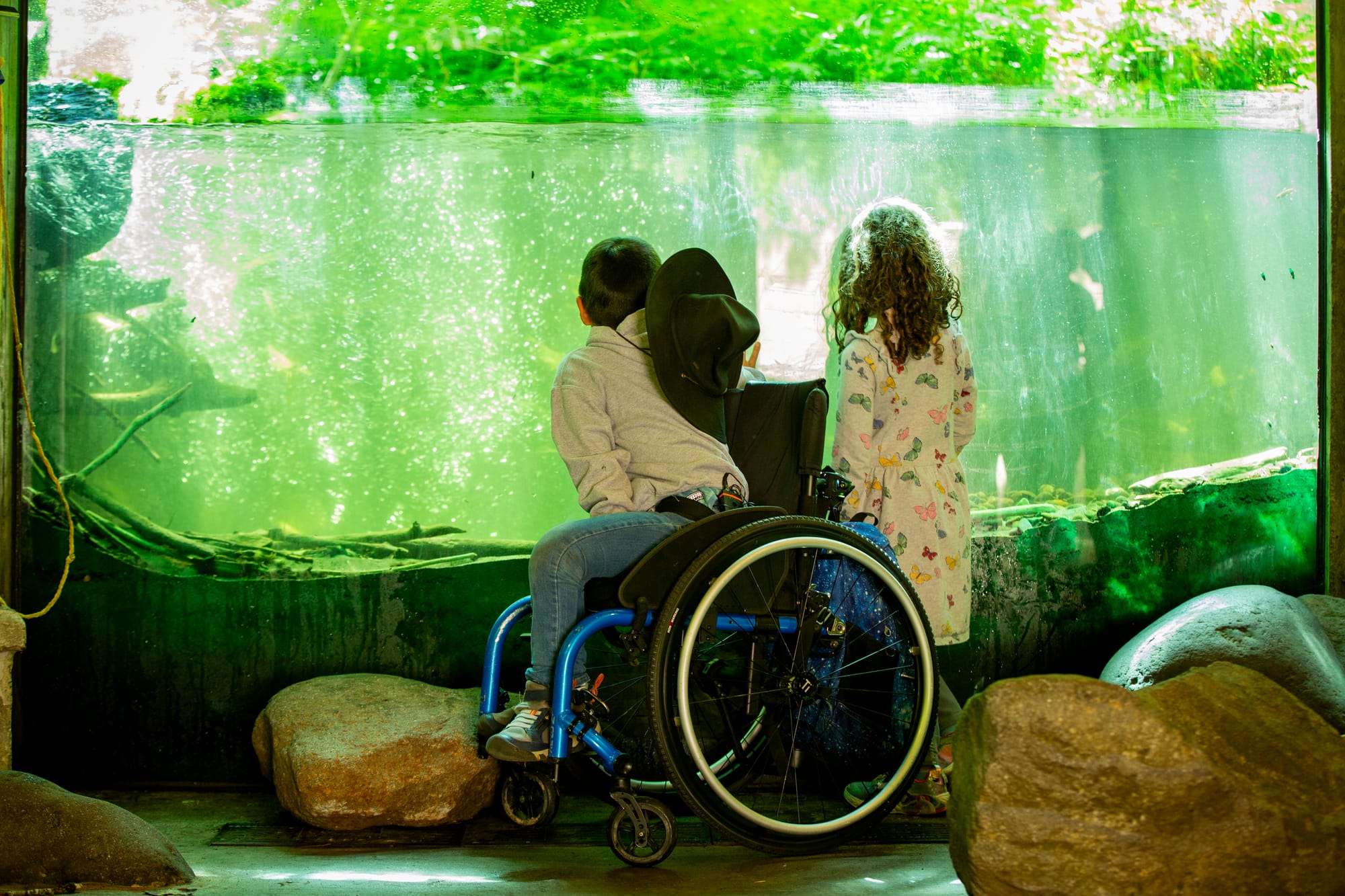
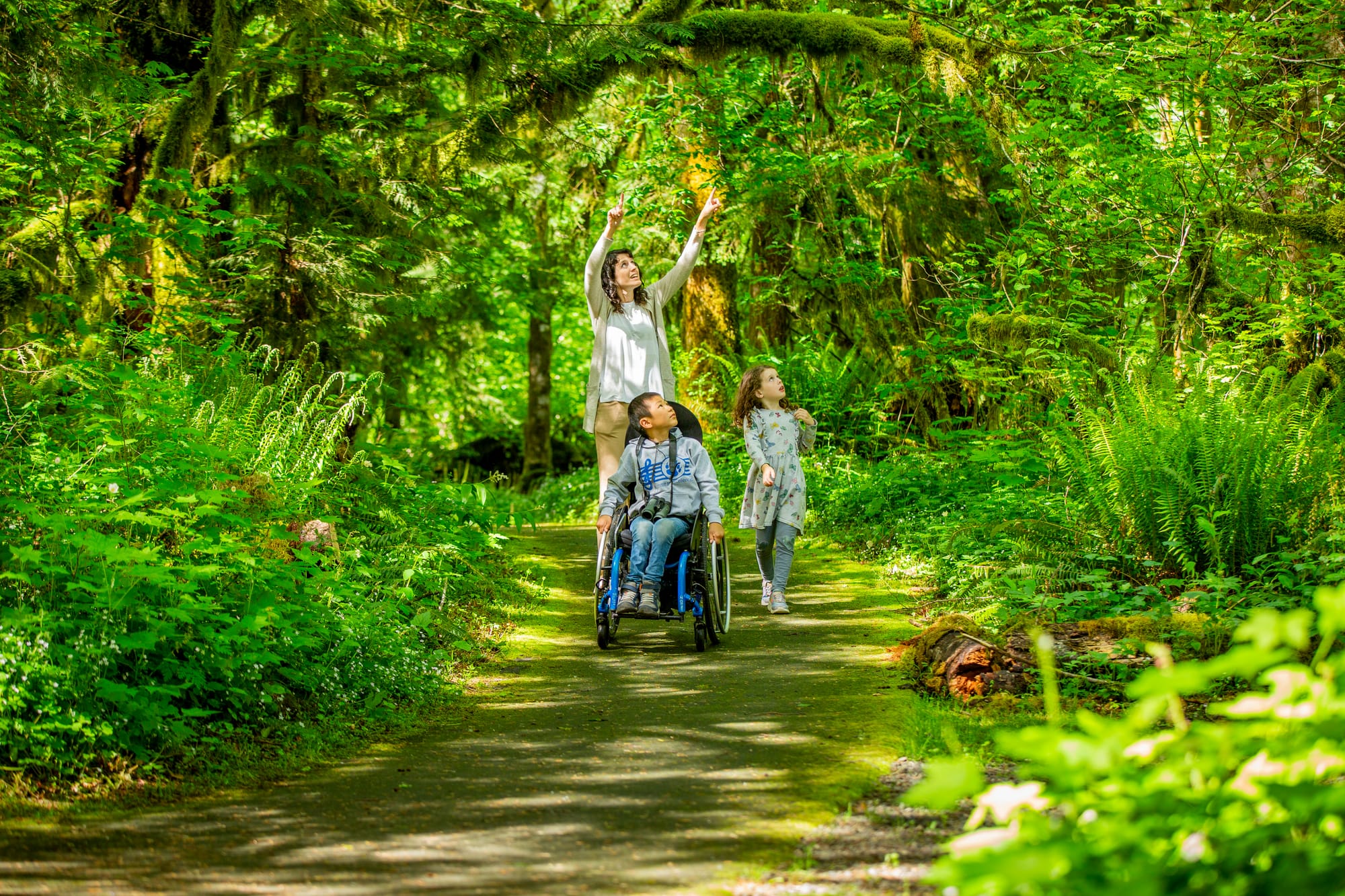
End the day back in Hood River or Welches. If you’re in Hood River, dinner at Double Mountain Brewing hits the spot with wood-fired pizza and local beer. If you’re closer to the mountain, Mt. Hood Brewing in Government Camp has hearty comfort food and a lively lodge-style atmosphere.
Day 3: History, Wildlife, & The Dalles
Spend your last day digging into the history and culture of the Gorge — and tasting some of the local flavors along the way.
Start in The Dalles, about 20 minutes east of Hood River. Your first stop is the Columbia Gorge Discovery Center & Museum. The building is step-free with wide hallways, accessible restrooms, and easy parking. Inside, exhibits walk you through the natural and cultural history of the Gorge, from Ice Age floods to Native American traditions and Oregon Trail life. Outside, there are paved paths around the grounds and an eagle enclosure with daily talks. It’s an engaging, family-friendly way to understand the landscape you’ve been traveling through.
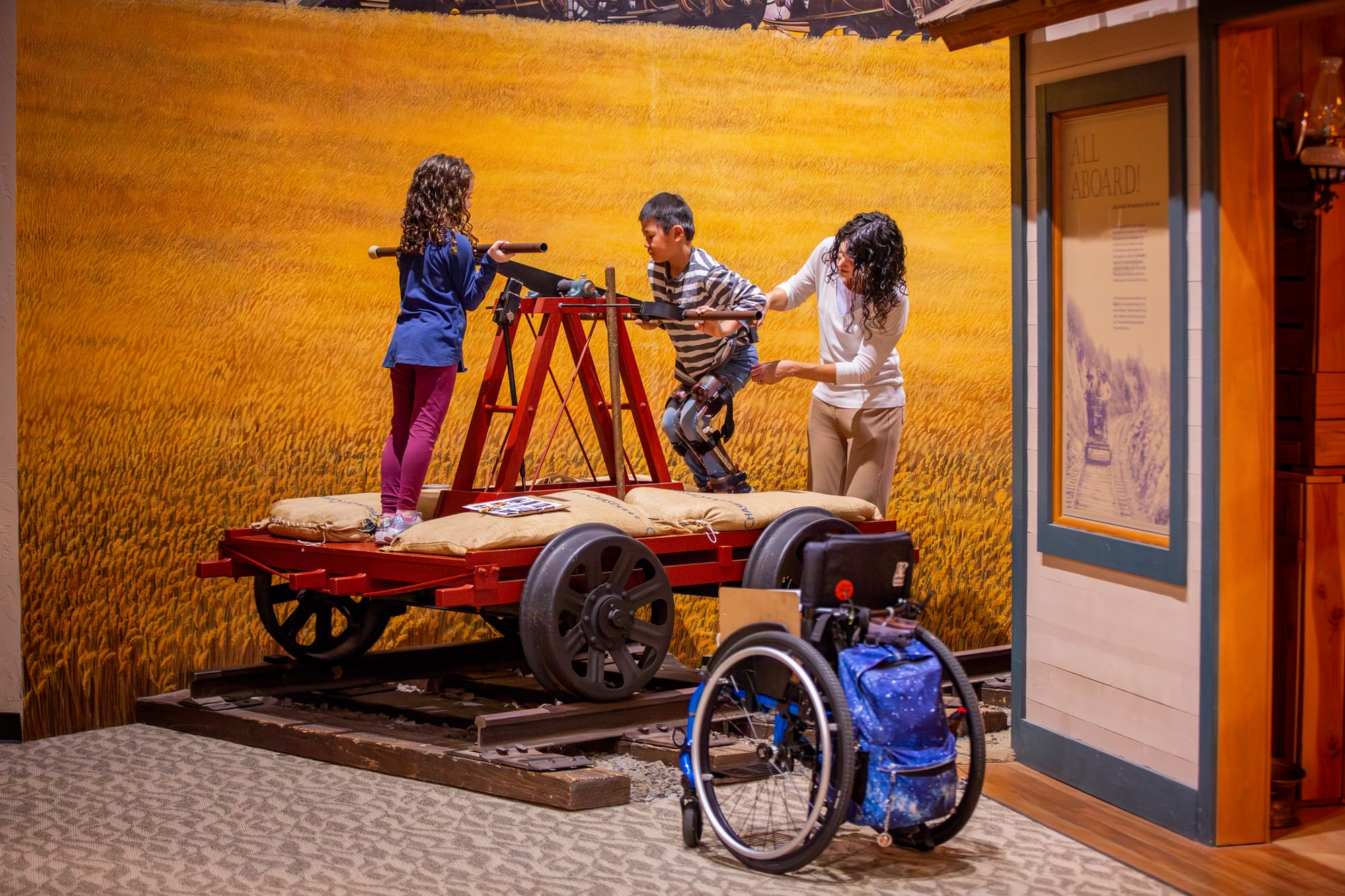
For lunch, head downtown to Freebridge Brewing. It’s in a converted bank building, with wide entryways, spacious seating, and a relaxed atmosphere. The menu leans toward wood-fired pizza, sandwiches, and local beer — plenty of fuel before the afternoon.
In the afternoon, you can go two ways:
- Stay in The Dalles and add another attraction, like the National Neon Sign Museum (bright, colorful exhibits and flat floors make it easy to roll through) or Sunshine Mill, a winery housed in a historic mill building.
- Or, head back west to Cascade Locks for the Bonneville Fish Hatchery. Paved walkways take you around ponds where you can see rainbow trout and the star of the show, Herman the Sturgeon, who’s been wowing visitors for decades. It’s an easy, fun stop that works well for kids.
Wrap up your day (and the trip) with dinner in Hood River. Solstice Wood Fire Pizza & Bar is always a good bet, with creative pizzas, a lively vibe, and a location right by the accessible waterfront park for one last sunset stroll or roll.
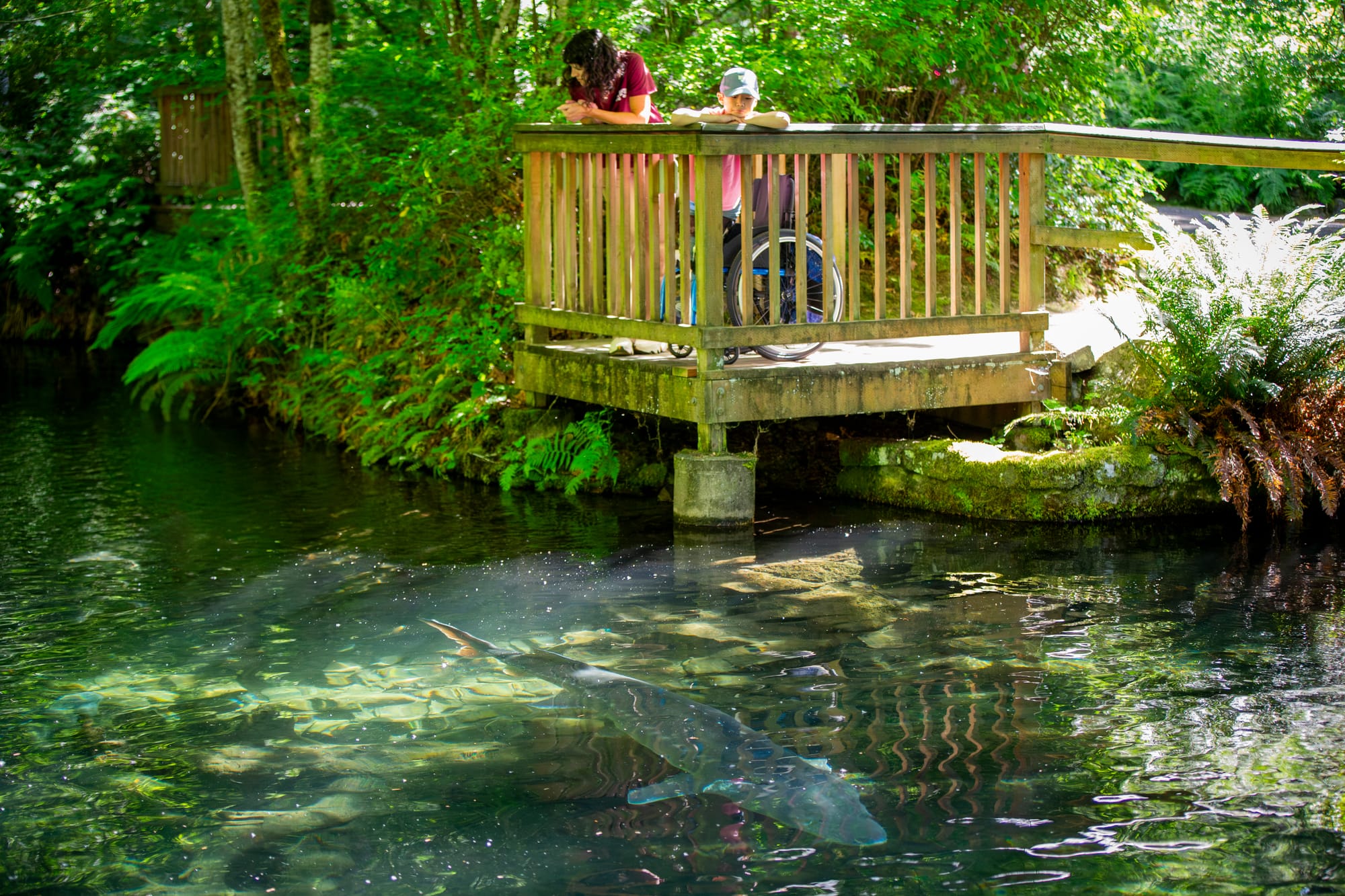
Quick Tips for Visiting Mt. Hood & the Gorge
- Pack for changing weather. The Gorge can be breezy and misty while Mt. Hood might have snow at the same time of year. Layers will save you.
- Parking fills fast. Multnomah Falls and popular trailheads often fill early in the morning. Arriving earlier than later helps, especially in summer.
- Adaptive programs are available. Mt. Hood Meadows runs adaptive skiing in winter, and some outfitters offer adaptive gear year-round for outdoor adventures.
- Bring water and snacks. Services can be sparse once you leave towns like Hood River, Troutdale, or Sandy.
- Transit can help in the Summer. Shuttles like Sasquatch Shuttle (to Multnomah Falls) or the Mt. Hood Express (up the mountain) are accessible and handy, especially during the summer. It can get busy quickly, causing congestion and parking limitations. Also, there is a time-limit Using these transit options can help immensely.
Visit the Gorge With Accessibility
The Columbia River Gorge and Mt. Hood are some of Oregon’s most striking landscapes — waterfalls that thunder down sheer cliffs, historic trails turned into smooth bike paths, and mountain views that change with every bend in the road. What makes the region even better is how much of it is now accessible.
From paved paths at Multnomah Falls to boardwalks at Wildwood and adaptive programs on Mt. Hood, there are plenty of ways to experience the outdoors without barriers. Add in verified hotels, family-friendly restaurants, and attractions like museums and scenic cruises, and you’ve got a region that works for travelers of all abilities.
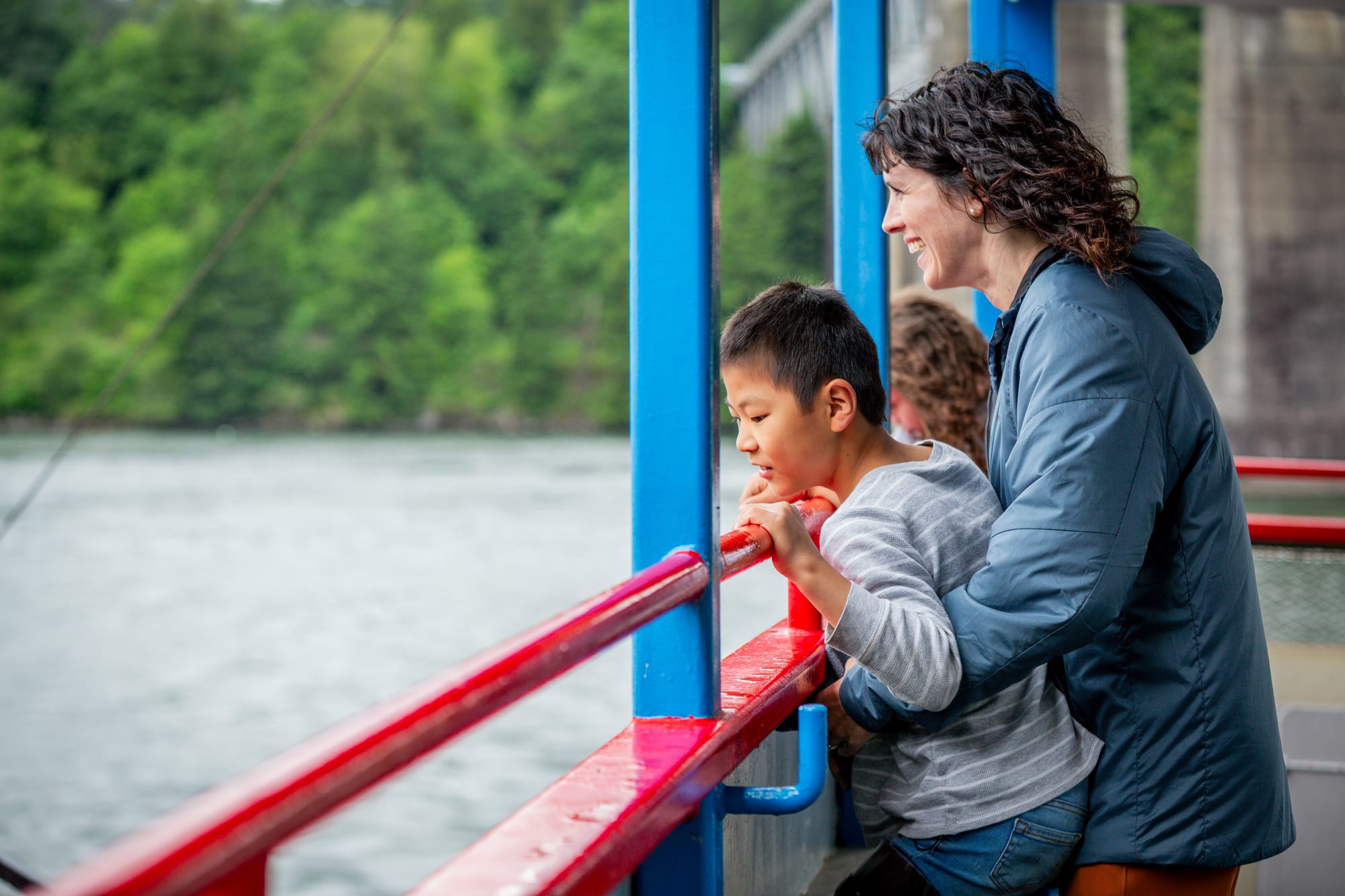
Experience Oregon Your Way
Find accessible hotels, attractions, restaurants, and more — verified for accessibility.
Start planning

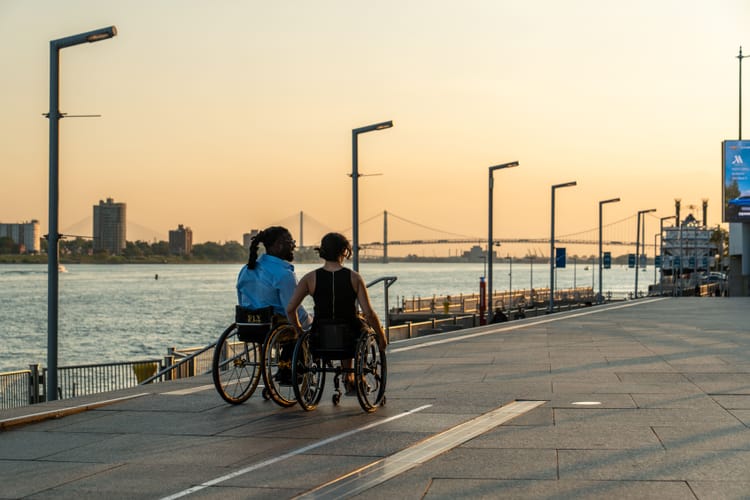
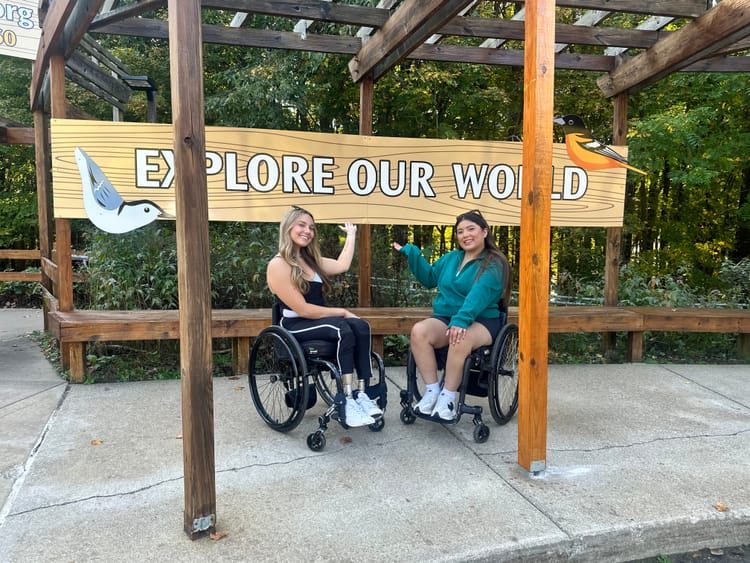
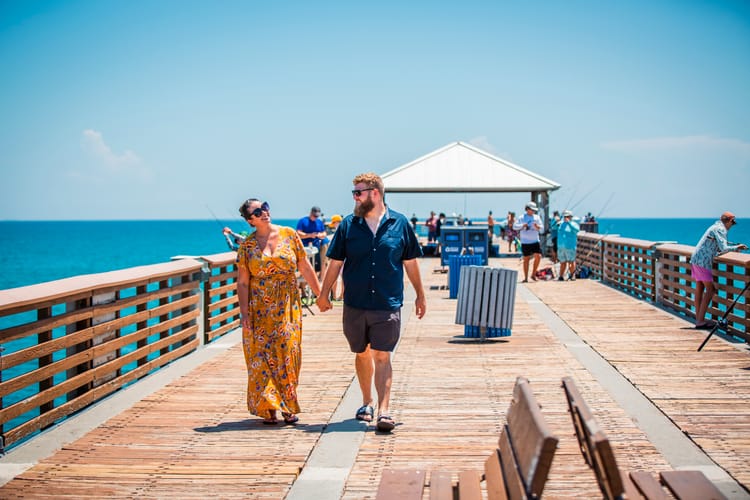
Comments ()